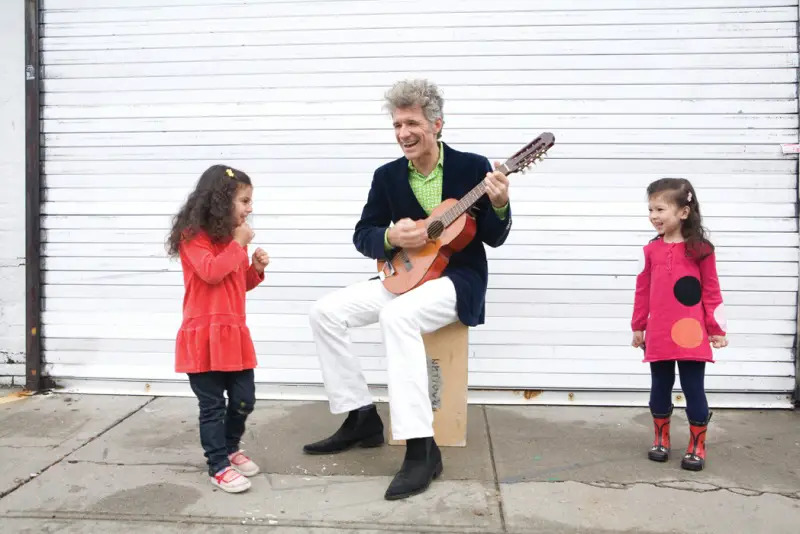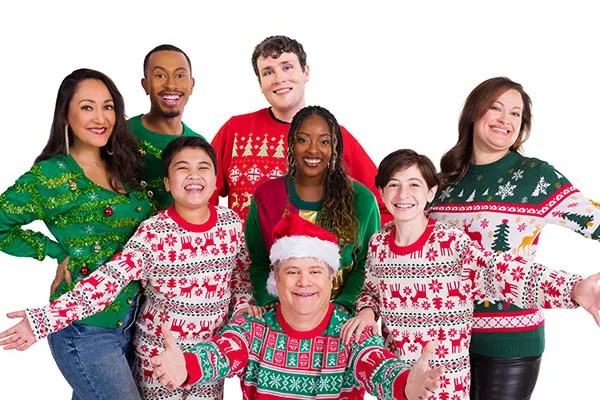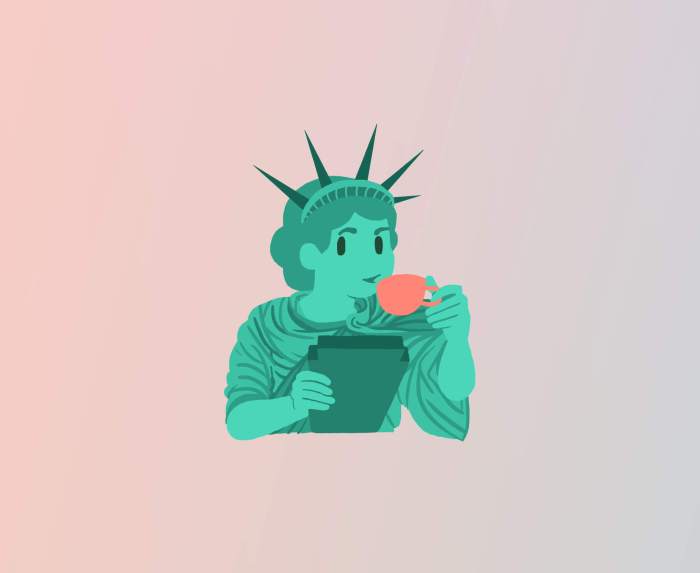A Brookyln-based, music-loving father explores how kids’ music morphed in to kindie rock, a genre that is popular with the whole family. Plus, his list of top 10 current kindie albums.
 Brooklyn-based musician and kindie-rock pioneer Dan Zanes, father
Brooklyn-based musician and kindie-rock pioneer Dan Zanes, father
of a teenaged daughter, remains one of the most popular creators
of songs that appeal to the whole family—and he continues to inspire
new artists to join the dance.
In 2003, Dan Zanes, the Grammy Award-winning musician and purveyor of what he describes as “family music,” was performing a benefit concert for a Brooklyn synagogue in need of money love to fix its crumbling sanctuary. Zanes’s reputation for adult-friendly kids’ music—an alternative to treacly, finger-picked folk songs on acoustic guitar—was already reaching Springsteen-like status in New York City by then. A bunch of kids, maybe 5 or 6 years old, stood on chairs and chanted “Dan Zanes, Dan Zanes, Dan Zanes” as if it was a Zeppelin show at the Garden in 1977. A few parents pumped their fists in joyful mockery of arena-rock behavior.
Zanes’s popularity, then and now, speaks to a sea of change in child-friendly music that some refer to as kindie rock—a new wave of music that relies on a formula of danceable, up-tempo songs, often with rock and pop underpinnings but amazingly diverse stylistically. And where kids’ music of the not-too-distant past was made under corporate oversight and often tied in with television shows starring big purple dinosaurs or oversized dogs, kindie rock draws comparison to indie rock in that it’s often homemade and either self-released or released on a small independent label. Despite its independence, its rise is evident on corporate media such as satellite radio and broadcast and cable television outlets such as PBS, Noggin, and Nickelodeon, with artists including Brady Rymer, Justin Roberts, Randy Kaplan, and numerous others leading the charge.
In the past, children’s music often pandered to an ideal of childhood, with dreamy themes and a lullaby-esque quality that lulled everyone to sleep, parents included. During the rare up-tempo moments, songs were musically dull, unsophisticated tributes to tying one’s shoes or the joys of going to the zoo or eating peaches.
“It was corporate,” says Zanes, whose sojourn into creating intergenerational “family music” was inspired by a futile search for music that his entire family could enjoy (he had just become a dad). “I was looking for something traditional that perhaps picked up where Folkways records left off, and that we all could listen to.” (Zanes is referring to the legendary Folkways record label, which produced American roots music by Woody Guthrie, Leadbelly, and Pete Seeger.) What he found was plenty of Chipmunk Punk-type mass-produced music without much artistry.
Once a guitar-wielding rock ’n’ roller who fronted the renowned Boston quartet the Del Fuegos in the 1980s, Zanes recognized a new career path lay in mining the honest spirit of those Folkways sides. Zanes recalls that time: “When I started doing this, I wanted to pick up on the traditions of Pete Seeger and Leadbelly. Those guys weren’t making children’s music! It was music that everybody could listen to and enjoy.” Not coincidentally, the same period in which Zanes released his debut family music CD (Rocket Ship Beach, 2000) saw a handful of established indie/alt-rock types dip their toes into the children’s music water, notably They Might Be Giants, whose fan base was getting older and becoming parents.
So what accounts for the post-2000 rise of kindie rock? “People who grew up on alternative rock in the ’90s are now having families of their own,” says Morgan Gus, the brainchild behind the popular Gustafer Yellowgold music and videos seen and heard on cable outlets such as Noggin. “Often they’re the ones making kindie rock music, and they’re the audience for it as well.”
Beth Blenz-Clucas of Sugar Mountain PR, who markets and promotes kindie music and its artists, also acknowledges the parental influence: “They want to share good music with their kids, and kindie or family music artists really deliver in terms of songwriting and musicianship.” That music, stylistically, seems to come from every musical crosscurrent save for Norwegian death metal. Bluegrass? Check. Cry-in-your-beer country? Check. Afro/Cuban and jazz? Check. A kid-friendly version of ’70s art rock? Check.
“Parents have experienced and been influenced by an incredibly diverse musical selection,” says Stephanie Mayers, a founder and producer of Kindie Fest, a yearly convergence of kindie rock’s artists and behind-the-scenes folks. “Once it’s realized that there are people out there creating intelligent, truly ‘musical’ music that is also family-friendly, people jump on it.”
Dozens of artists—obscure and well-known, veterans of indie-rock scenes and others launching their music careers as kindie rockers—now fall into that category. The net result is a wave of intergenerational, all-ages music that’s infectious, uplifting, and never patronizing.
Here is a list of our top 10 current kindie and family music CDs.
Also see:
Why We Need to Keep Arts Education in Our Schools
Broadway Star and NYC Dad Kevin Del Aguila Talks Theater
Will Singing to My Kids Make Them Smarter





















